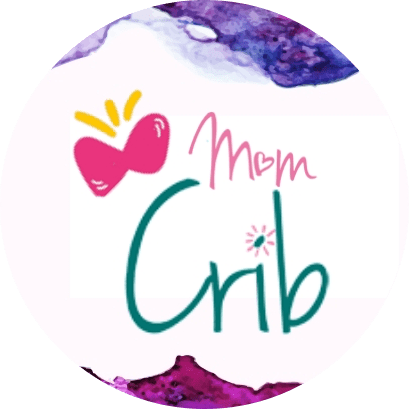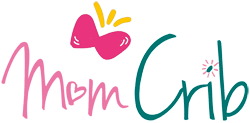Your life changes drastically after the birth of a child. It is now your responsibility to take care of the newborn, and that includes feeding them. Some moms prefer to breastfeed their child right from their breasts, while others opt for bottle feeding which can be easier and more flexible than breastfeeding.
Although it can be easier than breastfeeding for some moms, there is still a right and a wrong way to learn how to bottle feed a baby. Things such as preparing the bottle, correctly positioning your baby and burping them throughout the feeding are all essential to bottle feeding your baby. Here are some steps explaining how to bottle-feeding a baby the right way.
1. Pick The Right Bottle
The first thing you should handle when learning how to bottle feed a baby is picking out the perfect bottle. We recommend stainless steel baby bottles or glass baby bottles. These are guaranteed to be BPA free, don’t leach out harmful chemicals, and are also eco-friendly!
Your baby is going to grow up faster than you realize, so buying a variety of bottles and nipple pieces could be very useful in the long term.
Buying the bottle itself won’t be that difficult, but buying the correct nipple will be more of a challenge. Every nipple will have varying degrees of flow and as a newborn, they should only get nipples will a slow flow.
This way you decrease the chance of your baby overeating or choking on their food.
2. Sterilize Bottle and Hands
After you have picked out a bottle and nipple, you’re going to need to thoroughly wash them before giving it to your baby. Newborns are very sensitive and the smallest thing could affect their bodies negatively. It is for this reason that you should wash your baby’s bottle and nipple every day before feeding them.
Alternatively, many parents prefer to use sterilizers to keep the baby bottles completely free of any contaminants. We’ve got a list of baby bottle sterilizers as well, they’ll be useful in preventing bacteria and microbe buildups, even if you don’t use them every single time!
Make sure to wash your hands thoroughly too as some of the bacteria from your hands could potentially end up on your child’s bottle.
3. Begin Preparation of Formula
Now that your bottle is clean and ready, begin to prepare the meal for your little one. Some moms will fill the bottle with their own breast milk (in which case you’ll need breast milk storage bags), while others might use baby formula.
If using infant formula, make sure to read over the instructions before you begin. If you put too much or too little of any ingredient, it could throw off the whole formula and make it much less effective.
These formulas can only last for an hour if they aren’t refrigerated, but if they are refrigerated they’ll last up to 24 hours.
4. Test the Flow and Temperature of Formula
As stated earlier, when your baby is still a newborn they should only get nipples that have a slow flow. You should always test your baby’s nipple first before feeding them in case the nipple expands due to heat or other external factors.
This would increase the nipple’s flow and cause your baby to choke. You should also test to ensure the temperature of the formula is optimal. It doesn’t have to be warm but most newborns prefer their milk to be room temperature. If the milk is too cold, use a bottle warmer to heat it up!
5. Wait Until Your Baby Is Hungry
While learning how to bottle feed a baby, you’ll need to be able to notice when your baby is signaling that they want to be fed. These are called hunger cues. If you’re having trouble determining when your baby needs to be bottle fed, talk to a lactation consultant.
When a newborn is hungry they’ll do things like open their mouths, stick out their tongues, sucking on their fingers or sucking on anything near their face.
You should feed your baby before they start crying due to hunger, at that point, it’ll be difficult to calm them down with just food.
6. Position Your Baby Correctly
When you’re feeding the baby, you’ll want to hold them in a semi-upright position with their heads being supported and tilted up using your arm. Using that same arm, place your hand under their bottom to hold them up.
You should never feed your child while laying down as that could lead to choking or ear infections if the formula misses their mouths. Once they’re in the correct position, place the nipple on your baby’s bottom lip to signal that they’re about to be fed.
7. Notice How Much They Are Consuming
Pay close attention to the amount your child is consuming every time you feed them, your pediatrician will most likely ask questions regarding how much they’re eating and how often.
You should try to only feed them when they’re hungry, you don’t want to force them to consume more when they’ve already had their fill.
8. Burp Them
After about 2 ounces of formula, you should start trying to burp your baby. It is very easy for an infant to accidentally inhale some air while feeding on a bottle and this can cause discomfort in your child, making them cranky.
For this reason, you should burp your child throughout their feedings. One of the best burping positions is to put them over your shoulder and pat their back until they burp.
Conclusion
Being a parent is one of the most beautiful experiences life has to offer. It might be difficult at times, but there’s nothing more rewarding than seeing a smile on your child’s face. Leave feedback stating your own experiences with bottle feeding, and share this article with anyone who needs help learning how to bottle feed a baby.

The Mom Crib editorial team takes care that past articles are up to date in terms of the best baby products. We scour Amazon to find the products that are missing from our reviews and replace them. We also edit our blogger’s articles and make sure that everything is nice and neat, as their amazing posts deserve! Stay in touch with us by following our social media accounts.
